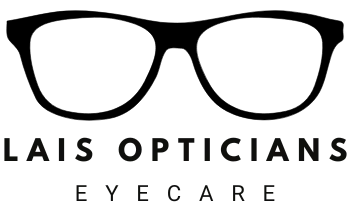When picking out a new pair of prescription glasses for yourself, the choices don’t just stop at the style of frame. You also have to make the correct choice of spectacle lenses to be fitted into the glasses, and the available options can become a little confusing. So, let’s break it down.
Before diving into the different materials, please note the meaning of refractive index – which relates to the speed that light travels through a particular media.
Essentially, the higher the refractive index of a lens material, the thinner it becomes.

Another item of note is Abbe Value. This measures the amount that light is dispersed or separated when passing through a lens. Low dispersion equals better quality.
The higher the Abbe Value, the lower the dispersion.
The main types of lens materials are:
CR39 (Columbia Resin 39) – Standard Plastic
High Index Plastic
Glass
Polycarbonate
Trivex
CR39 – Standard Plastic
The most commonly used lens material which comes in a wide range of prescriptions. Lightweight and less likely to shatter when compared with glass. It also has a high Abbe Value of 58 giving low distortion and is easy to tint.
However, with a refractive index of 1.498, at higher lens powers, will give the thickest result.
High Index Plastic
High Index plastic lenses come in a range of different refractive indexes; 1.6, 1.67 and 1.74.
These lenses are thinner than standard plastic and are used for higher prescriptions which would normally look thicker, with 1.74 index lenses producing the thinnest and lightest finish.
The do increase in price as the index increases. They also become denser than standard so ideal for semi-rim and rimless glasses where grooves and holes are cut, respectively, into the lenses.
The downside, apart from the cost, is the lowering of Abbe Value as the index increases, giving more distortion usually around the edges. Also these lenses are more difficult, sometimes impossible to tint.
Glass Lenses
Glass lenses are rarely used in normal everyday glasses in modern times. They are heavier and can shatter as normal glass can.
They would however, still be used in certain sunglass ranges. Glass is most resistant to scratches and has a high Abbe Value, providing clarity of vision.
When used in prescription glasses, rimless and semi-rimless styles would be unavailable as glass would not be drill or grooved.
Polycarbonate Lenses
Most commonly used in safety glasses, polycarbonate lenses are extremely impact resistant making them great for sportswear or for kids glasses. They also provide 100% UV protection as standard.
They have an index of 1.59 making them thinner and lighter than standard plastic. However, they do scratch much more easily, are difficult to tint and have a low Abbe Value.
Trivex Lenses
Very similar to polycarbonate lenses, trivex lenses are very tough and durable, again making them great for sportswear, kids glasses or safety specs, with 100% UV protection.
They have a refractive index of 1.53 making them thinner than standard lenses, although not as thin as polycarbonate. However, they do have an Abbe Value of 45 compared with 30 for polycarbonate.
